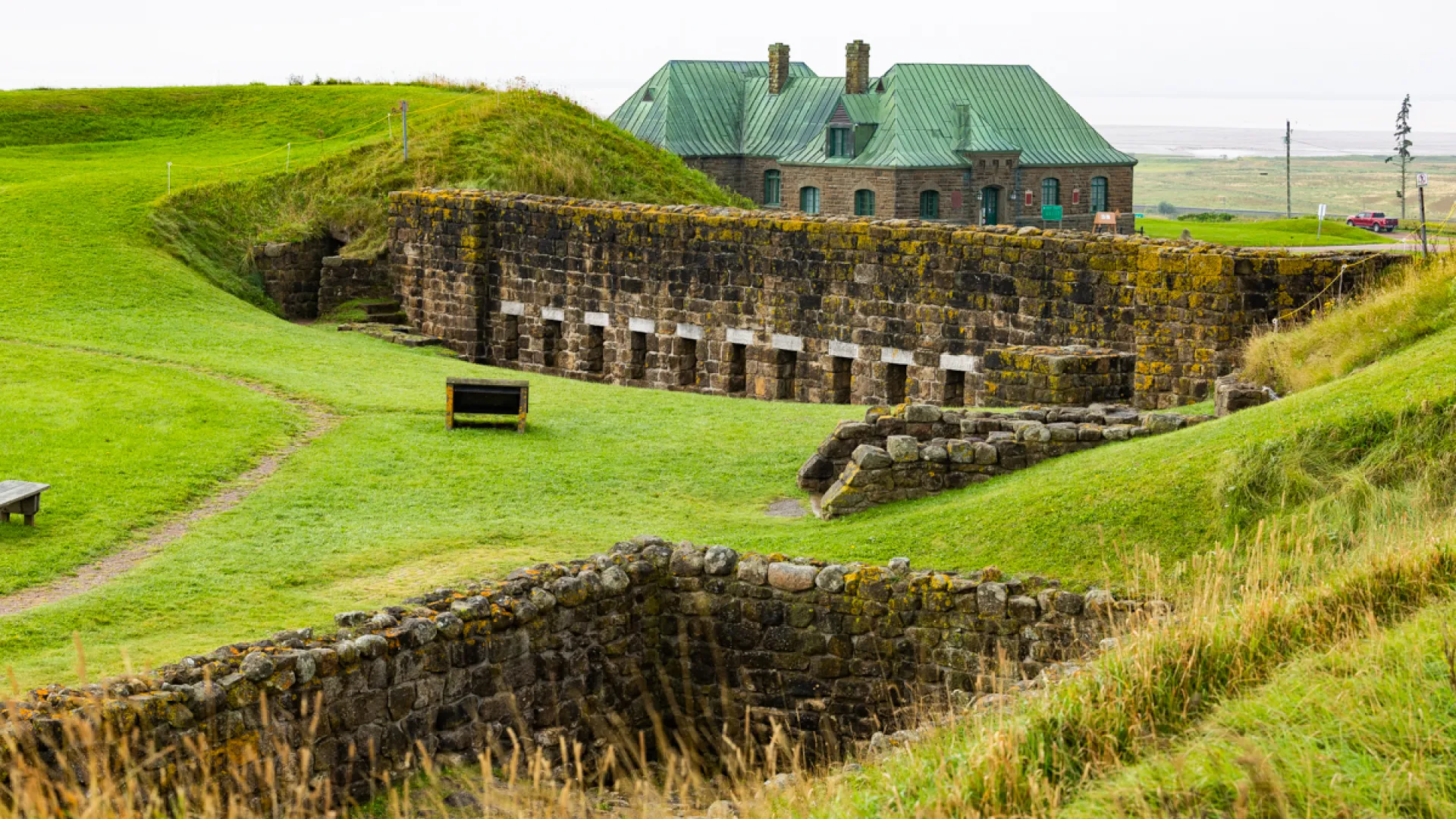On this page:
Aulac
Aulac sits along the high ground of Aulac Ridge, overlooking the sweeping Tantramar Marshes and forming one of the most historically significant gateways between New Brunswick and Nova Scotia. Just west of the Missaguash River—the boundary separating the two provinces—Aulac has played a central role in the region’s history as both a strategic military site and a transportation hub.
In the mid-18th century, the ridge at Aulac became a focal point of tension between the French and British. To counter Britain’s Fort Lawrence across the border, the French constructed Fort Beauséjour on Aulac Ridge in 1751. Four years later, in 1755, the fort fell to British forces under Lieutenant-Colonel Robert Monckton during the Seven Years’ War and was renamed Fort Cumberland. The site later became a key garrison during the Eddy Rebellion in 1776, when American sympathizers attempted—and failed—to seize it.
Before the era of military conflict, the area around Aulac had been settled by Acadian families. A plaque on Brown Road marks Île de la Vallière (Tonge’s Island), believed to date from around 1676 to 1684, and serves as one of the earliest recorded Acadian sites in the Tantramar region. After the Expulsion of the Acadians, the arrival of Yorkshire settlers in the 1770s reshaped the community, introducing new farms and trade.
By the late 19th century, Aulac had evolved into a crossroads community. The Intercolonial Railway, completed in 1872, curved around Aulac Ridge below Fort Beauséjour, bringing new economic opportunities and transportation links. Nearly a century later, the Trans-Canada Highway and Route 16 were constructed through Aulac in the 1960s, cementing its role as a modern-day transportation hub. Today, the community is best known for its proximity to Fort Beauséjour–Fort Cumberland National Historic Site, and for its cluster of highway services welcoming travelers entering and leaving the province.
Aulac stands as a place where centuries of history converge — from Acadian settlement to military defense, and from early agriculture to modern commerce — all against the backdrop of the Tantramar landscape that has witnessed it all.

